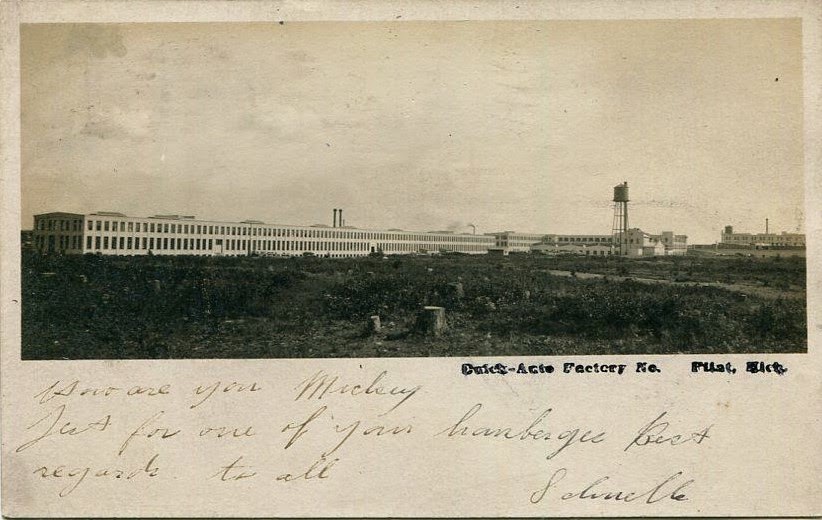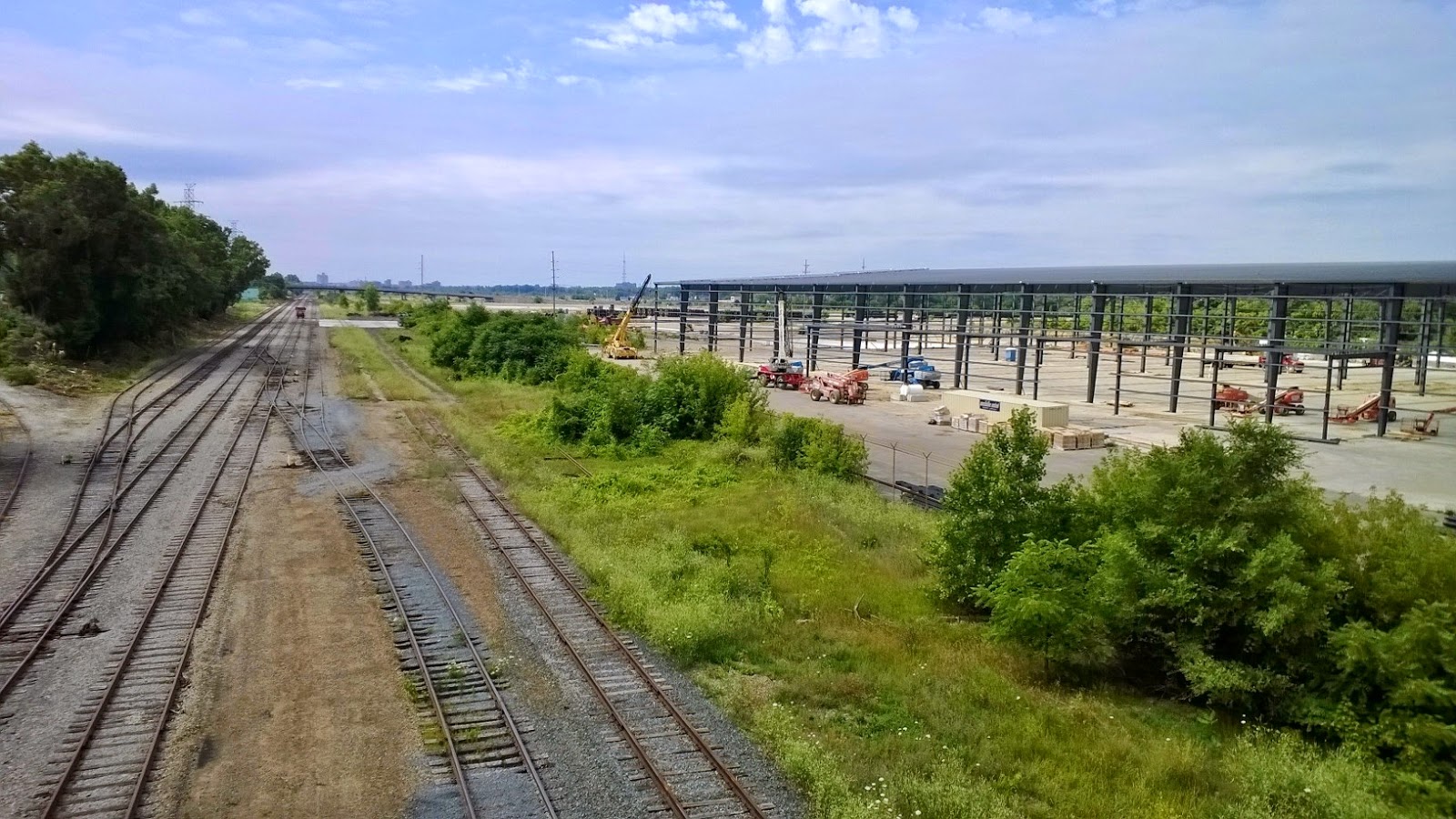.JPG) |
This north-east view from 1906 shows all the same structures shown below. This photo was taken from the roof of the Stewart #4 body assembly factory. Hamilton Avenue is in the foreground. Links: Factory #04 Collage Oak Park Power Company The W.F. Stewart Factories In Flint. Buick Factory #01. Factory #06 Assembly The Weston-Mott Factories At Buick Industrial & Hamilton Avenues Oak Park Entrance 1934 - 2001. |
Saturday, July 19, 2014
1906 Buick.
Wednesday, July 16, 2014
Buick City Site Has life Once Again.
 |
| Leonard Thygesen as always is still on the job documenting the Buick site. |
 |
| The road in the foreground is Pierson Road which was the northern most boundary of the Buick property. |
 |
This is the site of the former factory #38 Warehouse. Links: American Cast Iron Building #38 Warehouse |
Thursday, July 3, 2014
Early Buick Assembly.
.JPG) |
| This staged photo from the Buick assembly plant in Flint, Michigan shows what I believe is a 1909 Marquette Buick. I think the auto directly behind this one is a model 10 with a surrey top. The back light (rear window) design on the model 10 was used from 1907-1909; so this photo is narrowed to those years anyways. I can't say what the auto in the rear (facing) is. I would certainly say this is in factory #06. The men posed for this photo sure look familiar to me but I'm not sure of their identity's. The large gentleman ( second from left) resembles the Buick racing team manager William Pickens. |
 | ||
Bob Burman at the Indianapolis race in 1909. According to the book "Seventy Years Of Buick" by George Dammann this was one of 3 modified model 17's entered in this particular race. Notice the Vibrator (coils) mounted on the dash just above the steering column; This is shown farther below; noted with the red line. The coil used here appears to have wires exiting from the top and bottom.
|
 |
There were numerous company's making these back then. The Remy units were first used at Buick in 1905. Remy lost their business with Buick in 1911 at which time Remy and the Delco company merged thus creating the Delco and Remy company. This control switch was for changing connection from battery to magneto for the spark. The button is for the seldom used cold start or free start The button is for the Acetylene starter. You pull a button or handle on the dash, which injected Acetylene (used for headlamps) into the cylinders, then when you turned the switch for battery and pushed the button it fired the coils and theoretically started the engine. It is said that many engines blew apart using this starting procedure.. Other names for this unit were: trembler or buzz-coil. Links: Delco Remy History Marquette - Buick A.C. On Industrial Avenue and the Buick Bug. Buick Racing Team |
Subscribe to:
Comments (Atom)













